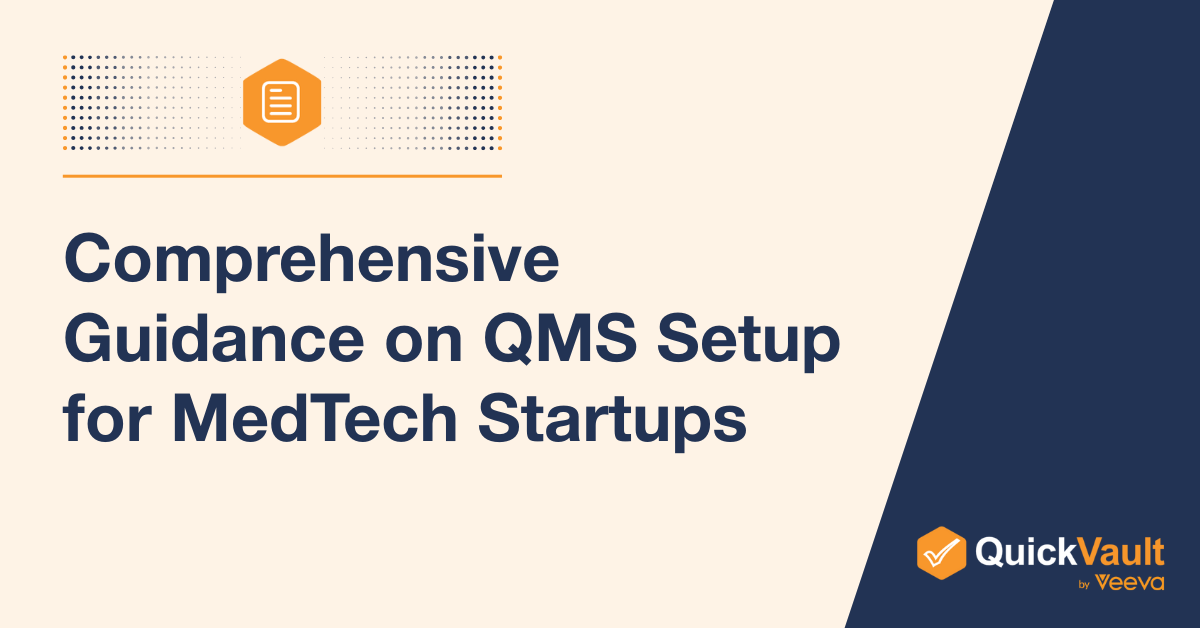
Setting up a Quality Management System (QMS) for medical device startups is a crucial step toward ensuring product quality, regulatory compliance, and market success. The process involves several key steps, each designed to establish robust quality processes that align with industry standards and regulatory requirements. Here’s a comprehensive guide to help MedTech startups establish an effective QMS.
Understanding Regulatory Requirements
Begin by familiarizing yourself with the regulatory landscape for medical devices in your target markets. Key standards include ISO 13485, which outlines requirements for a comprehensive QMS for the design and manufacture of medical devices, and the FDA’s Quality System Regulation (QSR), part of Title 21 CFR Part 820 for the United States. Compliance with these standards is often a prerequisite for market access and can significantly influence your QMS structure.
Defining Quality Objectives and Policy
Set clear, achievable quality objectives that align with your startup’s mission and the expectations of stakeholders, including patients, healthcare professionals, and regulatory bodies. Your quality policy should reflect your organization’s commitment to meeting these objectives and maintaining high-quality standards in every aspect of your operations.
Document Control and Management
Implement a robust document management system to control the creation, review, approval, and revision of all QMS documents. This system should ensure that documents are accessible to relevant personnel and protected from unauthorized changes, loss, or deterioration.
Design Controls
Design controls are critical for ensuring that medical devices meet user needs and specified requirements. This includes systematic processes for design planning, input definition, output review, verification that the design meets input requirements, validation that the device meets user needs and intended use, and design transfer into production.
Risk Management
Incorporate risk management into your QMS from the outset, applying it throughout the product lifecycle. Tools like FMEA can help identify potential failure modes, assess their impact on device performance and patient safety, and prioritize mitigation actions.
Supplier Management
Develop a supplier management program to ensure that all external providers meet your quality standards. This involves setting clear criteria for supplier selection, performing due diligence, and monitoring supplier performance against agreed benchmarks.
Production and Process Controls
Clearly define production processes, including quality specifications for raw materials, components, and finished devices. Process validation is essential to demonstrate that your manufacturing processes consistently produce products that meet quality requirements.
Corrective and Preventive Actions (CAPA)
Establish a CAPA system to address nonconformities and potential quality issues. This involves investigating the root causes of quality problems, implementing corrective actions to address immediate issues, and applying preventive measures to avoid recurrence.
Training and Competence
Ensure all personnel are trained and competent in their roles, particularly those whose work directly affects product quality. Maintain comprehensive records of training, skills, qualifications, and experience.
Internal Audits and Management Review
Conduct regular internal audits to evaluate the effectiveness of your QMS and identify areas for improvement. Management reviews should be held periodically to assess overall system performance and ensure alignment with the organization’s quality objectives.
Regulatory Affairs Management
Stay informed about regulatory changes and ensure ongoing compliance with all relevant laws and regulations. This includes submitting necessary documentation for device approval and reporting adverse events or product recalls as required.
By systematically following these steps, MedTech startups can establish a robust QMS that not only ensures regulatory compliance but also lays the foundation for high-quality product development and successful market entry.